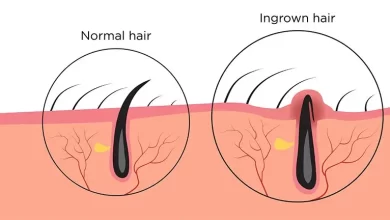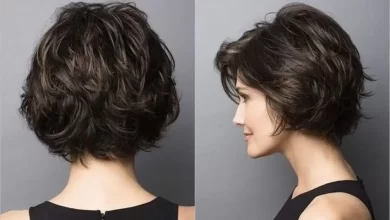How To Get Rid Of Ingrown Hair Quickly And Safely?
Have you ever noticed pimple-like, little dots after shaving? Do these pink or red dots itch like hell? Are they filled with yellow or green pus? They’re ingrown hair. In this article, you’ll get to know – how to get rid of ingrown hair? and how to prevent them.
But, first of all, don’t freak out when you see them because they aren’t as dangerous as they appear.
The bitter truth is that hair removal methods like shaving, waxing and epilating are going to cause ingrown hairs for both men and women.
What are Ingrown Hairs?
Ingrown hairs are hairs that curl around and grow back into your skin instead of rising up from it.
Your body’s immune system recognizes this hair as an intruder and attacks it, creating red and inflamed areas. These gross red bumps are susceptible to infection and can make your life a living hell.
The ingrown hairs itch, irritate and are unsightly, causing both embarrassment and discomfort.
Check Out For These Signs and Symptoms of Ingrown Hair
- Itchiness and tenderness.
- Red or pink bumps on the skin (papules).
- Small pus bumps or dry red bumps, often scattered over an area that has been shaved recently.
- Painful acne-like eruption after shaving.
- Small, pus-filled, blister-like lesions.
- Skin darkening or hyper pigmentation.
- Embedded hairs.
5 Reasons You Have Ingrown Hair
1. Improper shaving
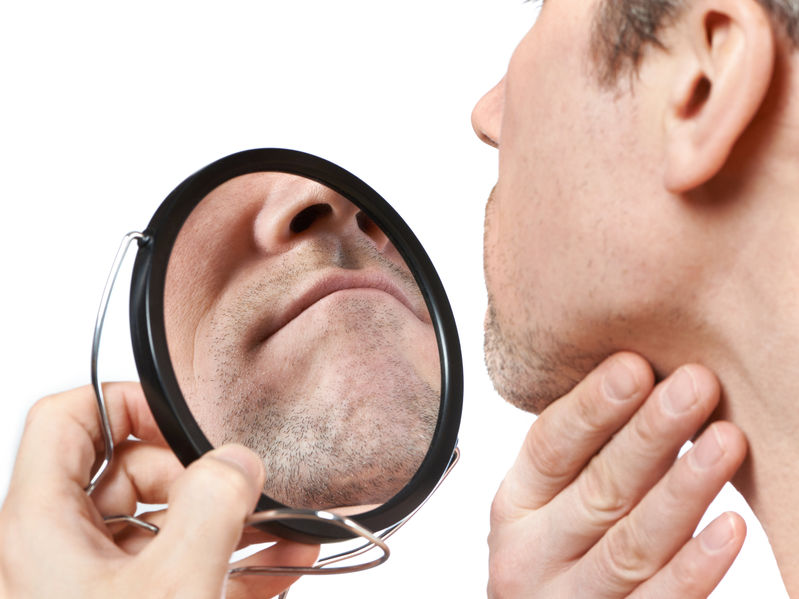
This is the most common cause of developing ingrown hair. If you shave carelessly, it may happen that the top section of the hair is cut with the razor.
As a result, instead of getting a straight outward growth, the hair bends inwards and forms inside the skin.
2. Dead skin deposition
Mostly, razor bumps occur due to improper methods of hair removal. But, sometimes they occur naturally.
How?
Piling up of dead skin blocks the opening of hair follicles and causes the hair to grow inwards.
3. Waxing, Threading, and Plucking
These methods can cause of a lot of trauma to your hair follicles.
But this can be avoided by taking a sauna or using moisturizers before going for these techniques. As it’ll open up the follicles and make your skin supple.
4. High levels of certain s*x hormones
Some people have high levels of certain s3x hormones, which can cause excessive hair growth. These people are more likely to get ingrown hair.
5. Thick or curly hair
Ringlets look cute but a report says that African-Americans, Latinos, and people with thick or curly hair are more prone to develop ingrown hairs.
Because curly hair grows back, so it can easily poke back through the skin and get trapped under the surface.
How to Get Rid of Ingrown Hair on Neck at Home?
Ingrown hair on the neck is not uncommon.
Men with curly hair tend to face this condition more often than others. But anyone can develop razor bumps after plucking or shaving.
Sometimes, shaving cuts the hairs on the neck so short that they curl back and grow into the skin. This results in an inflammatory response, which causes the unwanted red papule or ingrown hair.
But the good news is: we will share a guide on how to get rid ingrown hair at home.
Directions
- Using a sterilized needle or a pair of tweezers, gently pull the embedded tip out of the skin to dislodge the ingrown hair. But don’t forget to swab the area with alcohol after the tip is free to avoid any kind of infection.
- Massaging the neck with a soft-bristled toothbrush can release the tips of hairs growing into the skin. After the hair is no longer growing into the skin, inflammation will disappear soon.
- Apply a topical medication directly onto the razor bumps. As this’ll kill bacteria, remove dead skin, reduce inflammation and help in getting rid of those silly bumps.
- Some ingrown need to be treated with an oral or topical antibiotic. So, ask your dermatologist for it. This can speed healing of razor bumps.
- The American Osteopathic College of Dermatology has advised to let the hair on your neck grow as it is the most effective method to get rid of embedded hair.
But you’ve to be patient because this will take time to show desired results.
How to Get Rid of Ingrown Hair on Legs ASAP?
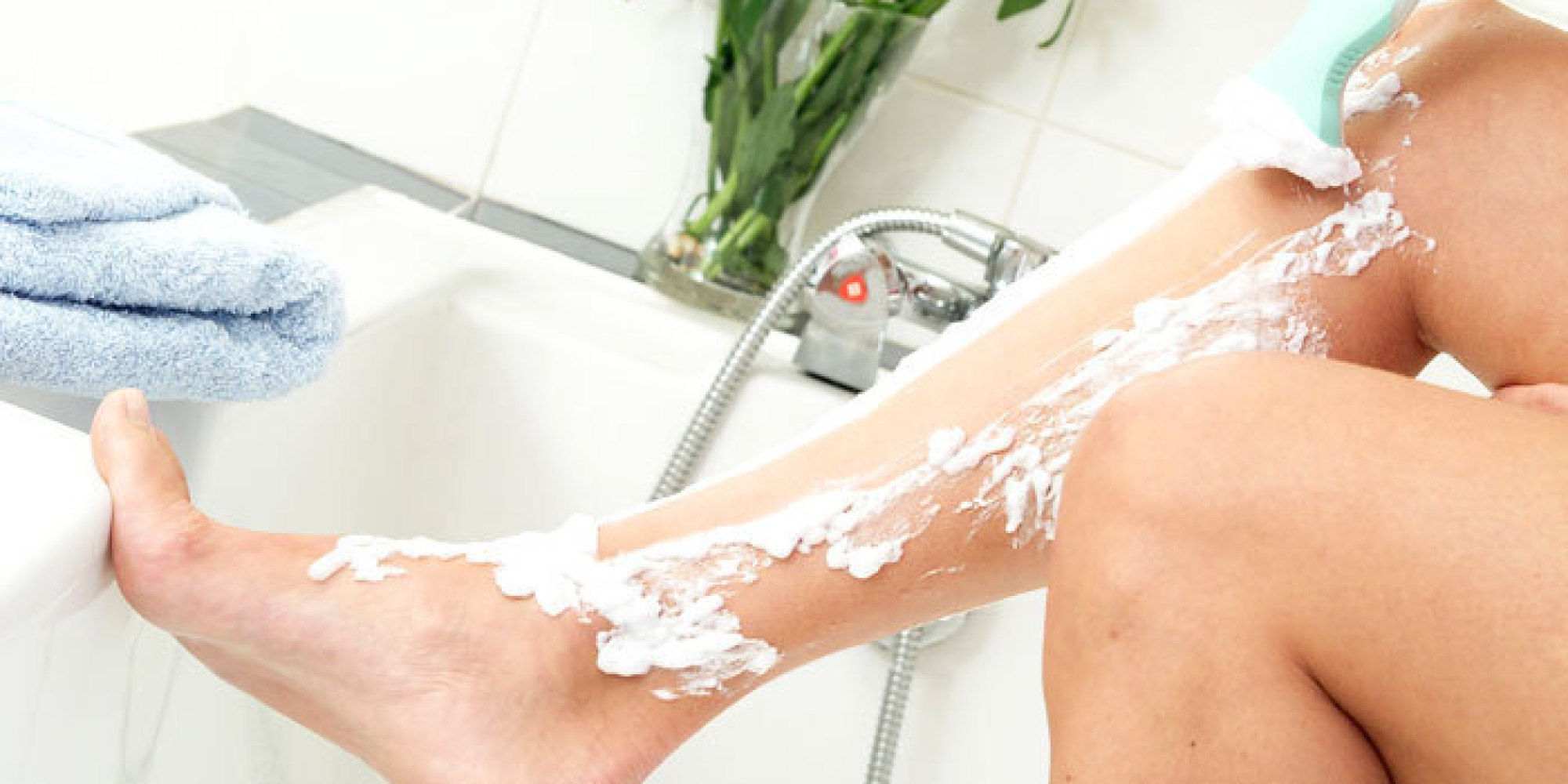
Shaving your legs is the best way to rid of ingrown hair.
The appropriate regimen for each person is difficult to determine without experimentation.
So you’ve to discover yourself what works best for your legs.
Tips To Shave Your Legs Smartly
- Shave after or during the shower to take advantage of the steam’s effect on your skin and leg hair. Because tight and dry skin facilitates ingrown hair growth.
- Exfoliating your skin might help your cause because it sloughs off irritating dead skin cells. Or it might hurt your cause because of too much rubbing, scrubbing, and scraping of the skin.
- Cleanliness is next to Godliness, so always use a clean and sharp razor.
- Generally, leg hair grows downwards, toward the foot, though most people have stray hairs that defy this convention.
- Therefore, shave with the grain. Because shaving against the grain can cause the remnant of the hair to bend and curl, increasing the chance of ingrown hair.
- Also, shaving in the same direction that your hair grows lessens the chances of irritation. If this doesn’t help, then try shaving against the grain. It’s less effective, but it works for some.
- After every stroke, rinse or tap disposable razor firmly on the side of the sink or tub to knock the accumulated hair out from between the blades. If you’re using an electric razor, then make sure to remove the guard and clean it thoroughly after each shave.
- Place a cool washcloth on your leg after shaving. This’ll reduce inflammation, and contract your pores. But don’t rub the washcloth; simply press it firmly on your skin.
Simple Tips to Care for Ingrown-prone Legs
- Friction is one of the factors with ingrown hairs. Therefore, opt for loose-fitting clothing as tight clothing prevents hair from growing away from the body. Let your legs breathe and instead of tights, try exercising in sweatpants, shorts or athletic pants.
- Avoid alcohol as it tightens and dries out your skin, which in turn worsen the irritation and aggravate ingrown hairs.
- Don’t shave, wax, or try other hair removal techniques for a few days. Or try depilatory creams in place of shaving.
- These creams dissolve hair beneath the surface of the skin. Therefore, potentially mitigate a major irritant for you.
- Apply aloe Vera liberally to soothe red and irritated skin.
How to Get Rid of Ingrown Hair on Vagina without Irritating Your Skin?
There is no doubt that laser is the Rolls-Royce of hair elimination. But, unfortunately, it’s not everyone’s cup of tea.
So if you’re not going for laser or even wax, ouch!! Then alcohol-free shaving creams are your best friend.
Also, shaving is your personal choice, but I’d like to tell you that the lack of hair around the anus will make it impossible to pass gas silently (stop laughing!!).
Things to Remember while Shaving the Pubic Area
- First thing first, be VERY gentle.
- As mentioned earlier, you should shave in the direction of your hair’s natural growth, not against it. This applies to bikini area, arms, legs or anywhere else you stick that your razor.
- If you want to avoid ingrown hairs, then exfoliate once or twice a week.
- If you’re a chronic sufferer of ingrown hair on vagina and shaving fails (hey, it happens), then do whatever you want to do, but DON’T pick!
Itching, razor burn, cuts, blisters, pimples, genital infections, ingrown hairs and Folliculitis can be the possible consequences of shaving.
If you’re experiencing any of the above problems, then here are some general treatment procedures to treat them.
- Itching/Irritation: Simply apply hydrocortisone two 2-3 times a day and lock your razors in the closet for two months.
- Razor burn and cuts: Reap the benefits of aloe Vera to soothe sensitive skin and help reduce the pain.
- Blisters and pimples: There’s no problem as long as they’re not painful and bothersome. Just keep them clean and dry, and don’t pick them.
- Genital infections: Consult your doctor IMMEDIATELY.
- Ingrown hair: Don’t pick at them as this could cause infection.
- Folliculitis: For this a topical over-the-counter antibiotic will work after consulting your physician.
To prevent ingrown hair on vagina, shave with the grain please!! Or clip hair with a pair of scissors instead of shaving.
NOTE: If the symptoms don’t clear up after using the above mentioned procedures, then consult your medical provider.
Palo Alto Medical Foundation has also debunked some shaving “myths” and you can read them here.
How to Get Rid of Ingrown Hair on Face to Look Presentable?
You might be accustomed to seeing those stupid ingrown hair on your legs or bikini area, but they can show up on your face too. Cringe!!
To prevent this problem from marring your complexion, change your skin-care routine to “nip the ingrown hairs in the bud”.
Things you’ll need
- Gentle exfoliating scrub
- Towel
- Hot water
- Hair removal cream
- Facial cream with salicylic or glycolic acid
Steps to follow
- Massage a small amount of a gentle exfoliating scrub over your face using the tips of your fingers. Concentrating on the areas where ingrown hairs occur to slough off dead skins cells.
- Rinse your face with warm water, then pat your skin dry using a towel. Please don’t rub or wipe the skin, as this can cause irritation and increase the chances of an ingrown hair developing.
- Soak a CLEAN towel in hot water and wring it. Now, hot compress the areas of your face where you want to remove hair with this towel. Leave the towel in for 5 minutes to soften the hair follicle as this will reduce the chances ingrown hair developing.
- After that, remove the facial hair with your preferred hair removal cream.
- In the end, apply a thin layer of facial cream containing glycolic acid or salicylic acid on the areas of the face that are prone to ingrown hair. Make sure to apply the cream immediately after hair removal to prevent dead skin cells or bacteria from clogging the hair follicle.
How to Get Rid of Ingrown Hair in Armpit?
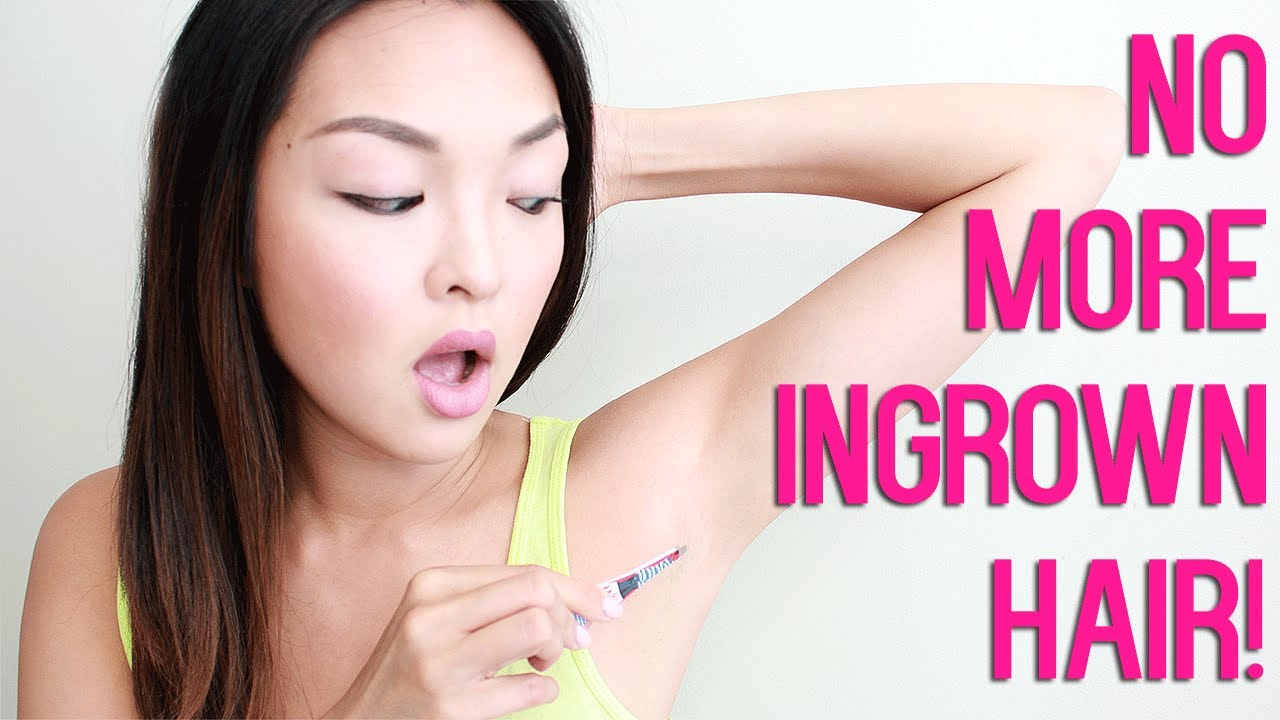
Whether you’re throwing on a tank top or slipping into a bathing suit, your grooming ritual might include shaving or waxing your underarms for a smooth look.
But a few days later you might notice itchy, red bumps in your underarm. These little bumps are a sign of ingrown hair, a pesky problem which is hard to avoid.
Luckily, there are some effective steps you can take to treat them.
- If ingrown hair is pus-filled, put a warm compress on it to help drain out the fluid.
- Then wash it with a disinfectant cleanser, apply an antibacterial ointment like Polysporin and wear a bandage until it heals.
- If the bump won’t budge within 3 days of the treatment, see your dermatologist and have it removed.
Sometimes, shaving itself causes ingrown hair. Therefore, a different method will be needed to get rid of hair in that area.
Epilating and waxing are both good options to get rid of ingrown underarm hair though they’re more painful than shaving.
Choosing not to shave at all is the BEST method to prevent ingrown underarm hair.
How to Get Rid of Ingrown Hairs on Stomach Safely?
The best way to get rid of ingrown hairs on your stomach is to prevent them from occurring in the first place. For this, exfoliate every time before you remove your hair.
You can exfoliate with:
- Natural bristled brush
- Loofah
- Exfoliating glove
- Exfoliation scrub that contains beads, pits or some other natural exfoliating substance.
Remember NOT to exfoliate your skin every single day as it might cause irritation or even infection. Exfoliating once a week or before you remove your unwanted hair is enough.
If exfoliation hasn’t worked, then try to force out the ingrown hairs out by using a warm compress for about 5 to 10 minutes.
Watch if the hair rises to the surface, if it has not put the warm compress again until it does.
When the hair is raised, then easily pluck out the hair with tweezers.
But, be very careful because the skin on the stomach is very thin and you definitely don’t want any scars.
However, I highly recommend you to see your doctor over plucking the ingrown hair out yourself.
Why?
Because he is called “Doctor” for a reason. Right?
How to Get Rid of Ingrown Eyebrow Hairs?
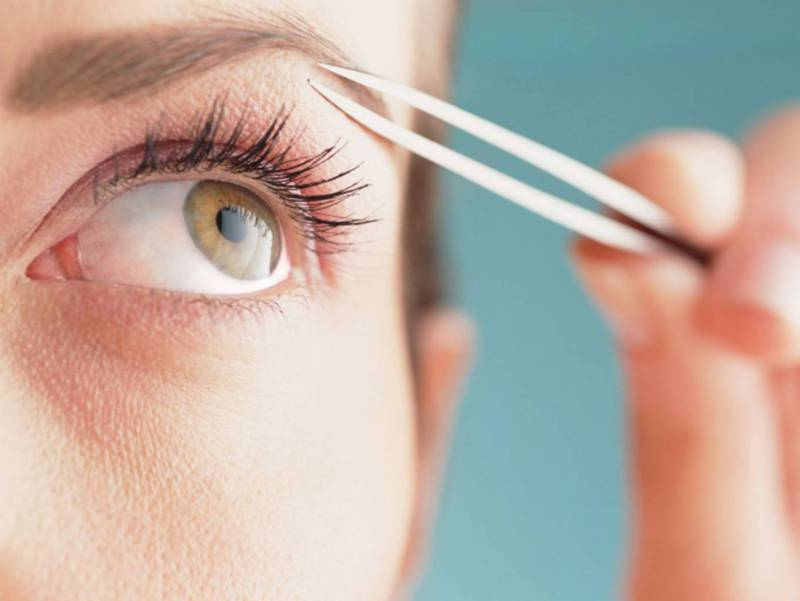
Ingrown eyebrow hair is very common among women.
One reason for women being subjected more to this condition is that they frequently use hair removal techniques to shape their eyebrows.
Sometimes the eyebrow hair grows inwards when it is not removed from the root and the result it irritating ingrown hair.
But you can get rid of an ingrown eyebrow hair by following the below-mentioned steps.
Things you’ll need
- Soft-bristled toothbrush
- Washcloth
- Cotton ball
- Rubbing alcohol
- Sterilized needle
Directions
- Apply a warm washcloth over your affected eyebrow for a few minutes to open the pores.
- Massage the ingrown hair with a clean, soft-bristled toothbrush for a few minutes. Do this at least twice a day. This’ll exfoliate the skin and stimulate the follicle and push the ingrown hair towards the surface.
- Now, the most difficult part, sterilize a sewing needle by wiping its surface with rubbing alcohol to yourself from infection or further irritation.
- Then, insert the sterile needle through the loop of ingrown hair. Slowly pull the loop outward until the entire ingrown hair emerges on the surface of the skin.
- In the end, remove any surface bacteria by wiping your formerly ingrown hair area with an alcohol-soaked cotton ball.
Ingrown Hair Cysts
If the ingrown hair has been growing under the skin for some time, then it might become long and twisted.
Over time this ingrown hair will develop into a mass under the skin. As the mass thickens, it’ll become a cyst.
It’ll cause a lot of itching, tenderness, bruising on the surrounding areas and also become filled with yellow or green fluid. This condition may worsen especially when the cyst is infected.
Google abounds with articles on “How to Get Rid of Ingrown Hair Cyst Naturally?”
But DON’T be fooled by them because trying to remove the offending hair will result in more problems. As it’ll irritate the area and a pustule will develop.
Your best course of treatment is to visit your physician dermatologist. He’ll surgically remove the hair and prescribe a course of antibiotics or a topical antibiotic cream to treat the area.
Therefore, it’s advisable to treat ingrown hairs before they develop into a cyst. Because addressing the matter before that stage will save you from so much of pain.
Conclusion
If you have or ever had ingrown hair, then you don’t have to be told how much of a pain in the neck they can be. They might not make up to the list of “Top Ten Worst Things in Life” but they’re an annoyance.
Also, there are only two techniques that don’t cause them: laser hair removal and electrolysis. But they’re quite expensive and not everyone can afford them.
The only and the best guide on how to get rid of ingrown hair is to PREVENT them at first place. Because prevention is ALWAYS better than cure.
Please pay attention to my SHOUTY CAPITALS, because I’ve capitalized them to stress upon some important points. Last but not the least; I’m looking forward to hear your thoughts and some home remedies for ingrown hair in the comment section below.



